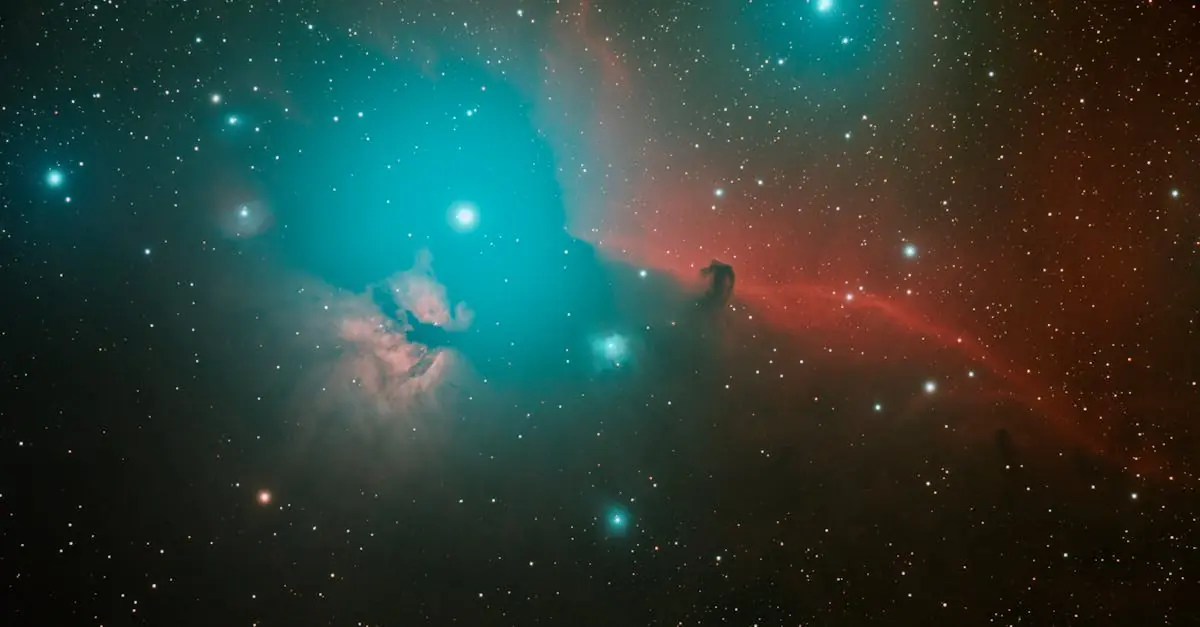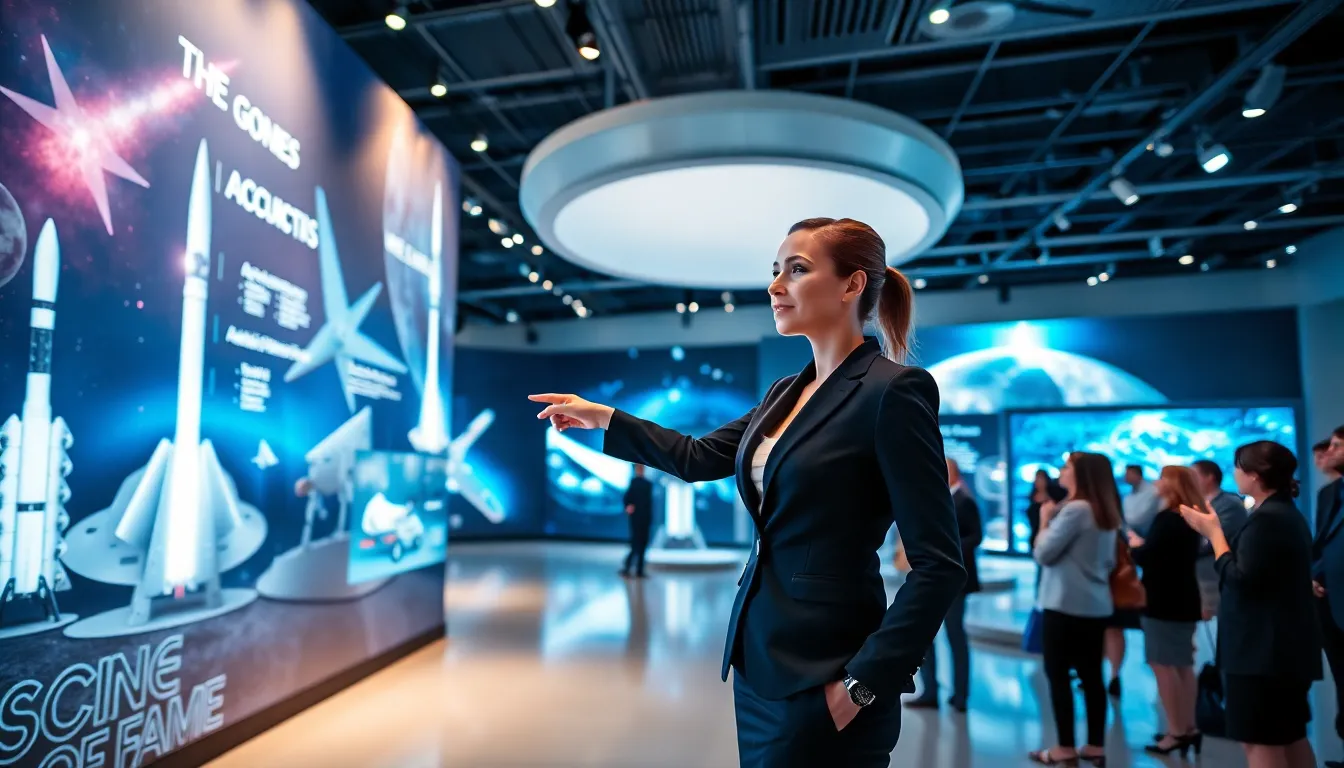When it comes to exploring the cosmos, the European Space Agency (ESA) is like the cool kid in class—always pushing boundaries and making waves. From launching satellites that help predict the weather to sending rovers to Mars, ESA’s space projects are nothing short of stellar. They’re not just shooting for the stars; they’re redefining what’s possible in space exploration.
Table of Contents
ToggleOverview of ESA Space Projects
ESA engages in various space projects that extend humanity’s reach into the cosmos. Satellite programs like Copernicus monitor the Earth’s environment. These data-driven initiatives support climate research, disaster management, and land use monitoring.
Rover missions, such as the ExoMars program, aim to explore Martian soil and search for signs of past life. An ambitious collaboration with Roscosmos, ExoMars will launch a rover and a surface platform to analyze Martian geology.
ESA’s Earth observation projects play an essential role in understanding weather patterns and natural disasters. The organization operates advanced satellites, including Sentinel-1 and Sentinel-2, which provide critical data for monitoring forest cover, agriculture, and urbanization.
Communication satellites also feature in ESA’s portfolio. Eutelsat and HISDESAT are notable projects that enhance telecommunication services across Europe and beyond. These satellites enable reliable connections for data transfer, broadcasting, and internet services.
As an international partner in the International Space Station (ISS), ESA contributes scientific expertise and technology. Collaborations with NASA, Roscosmos, and other agencies enhance scientific research and foster innovation in microgravity environments.
Additionally, ESA participates in space exploration initiatives beyond Earth. The Juice mission plans to investigate the gas giant Jupiter and its moons, aiming to unlock secrets about the solar system’s formation.
ESA maintains a strong commitment to innovation and sustainability in all its projects. The organization’s investments in next-generation technologies ensure ongoing advancements in space exploration and Earth observation, demonstrating their resilience in a rapidly evolving field.
Key ESA Space Missions
ESA’s missions exemplify innovation and a commitment to expanding knowledge. These projects encompass Earth observation and planetary exploration, vital for understanding both our planet and the universe.
Earth Observation Initiatives
Sentinel-1 and Sentinel-2 satellites lead ESA’s Earth observation efforts. Sentinel-1 employs radar technology to monitor land and sea, providing data critical for disaster management. In contrast, Sentinel-2 captures high-resolution optical images to support agriculture and forestry. The Copernicus program, which includes these satellites, enhances climate research significantly. This program plays a key role in monitoring environmental changes and supports EU policies aimed at sustainability. Overall, these initiatives equip researchers and policymakers with essential information.
Planetary Exploration Programs
ExoMars stands out as a cornerstone of ESA’s planetary exploration. This mission, a collaboration with Roscosmos, aims to study the Martian soil and search for past life signs. The planned rover will analyze soil samples using advanced scientific instruments. Additionally, the Juice mission targets Jupiter and its icy moons, focusing on understanding their potential for hosting life. ESA’s commitment to exploring other planets exemplifies its drive to push boundaries in space science and technology. Each mission contributes to a broader understanding of our solar system.
Innovations and Technologies
ESA focuses on advancing satellite technology and launch systems, showcasing its commitment to innovation in space exploration.
Satellite Development
ESA spearheads satellite development projects that enhance various applications in weather forecasting and environmental monitoring. The Copernicus program includes innovative satellites like Sentinel-1, which utilizes radar technology for comprehensive land and sea assessments. Furthermore, Sentinel-2 captures high-resolution optical images, vital for optimizing agricultural practices and forestry management. Emerging technologies in satellite design prioritize miniaturization, improving performance while reducing costs. ESA consistently integrates cutting-edge propulsion systems, ensuring efficiency in satellite operations. Additionally, partnerships with industry leaders accelerate the pace of satellite innovations, fostering a collaborative approach to meeting global needs.
Launch Systems
ESA operates advanced launch systems designed to efficiently deliver payloads into orbit. The Ariane rocket family represents a hallmark of reliability, transporting commercial and scientific satellites to various orbits. Innovations in reusability are a focus, as ESA develops next-generation launch vehicles that can reduce costs substantially. Ongoing research into reusable technologies parallels successes seen in commercial space travel. Additionally, the Vega launcher offers flexibility, accommodating a wide range of missions. Notably, the ESA’s collaboration with international agencies strengthens its launch capabilities, ensuring the agency remains at the forefront of space access innovations.
Collaborations and Partnerships
ESA actively engages in collaborations and partnerships to enhance its space missions and research initiatives.
International Space Agencies
Collaboration with international space agencies strengthens ESA’s projects. NASA and Roscosmos remain key partners, sharing technology and knowledge to advance science onboard the International Space Station. Continuous joint missions, like those focused on space exploration, create opportunities for shared research and resources. ESA’s alliances extend beyond traditional partners, involving agencies like the Japan Aerospace Exploration Agency and the Indian Space Research Organisation. Together, these partnerships drive global efforts in Earth observation, planetary science, and beyond.
Private Sector Involvement
Involvement from the private sector significantly boosts ESA’s capabilities. Collaborations with commercial companies enhance satellite deployment and launch services. Notable partnerships include ventures with companies such as Airbus and Thales Alenia Space, allowing ESA to utilize cutting-edge technology for satellite development. Startups also play a role, innovating in areas like satellite miniaturization and propulsion. These partnerships contribute to cost-effective solutions, facilitating faster access to space and expanding potential mission objectives.
Future Directions of ESA Space Projects
ESA continues to explore ambitious future projects that redefine space exploration. The Lunar Gateway initiative focuses on establishing a sustainable human presence on the Moon, enhancing international collaboration. This project aims to support exploration missions while facilitating scientific research in a lunar environment.
The agency is also working on the Earth observation satellite constellation called Copernicus 2.0, which will expand monitoring capabilities for climate change and natural disasters. Enhanced data collection from these satellites will improve predictive models and inform policy decisions regarding environmental management.
Mars exploration remains a priority for ESA, including the development of the ExoMars rover set to launch in the late 2020s. This mission will seek to understand the planet’s geology and search for signs of life, contributing to humanity’s understanding of Mars.
Furthermore, ESA’s focus on satellite miniaturization will continue, aiming to reduce production costs while increasing operational efficiency. Smaller satellites will provide critical data more rapidly, supporting various applications from agriculture to urban planning.
Collaboration with commercial partners plays a significant role in future initiatives as well. By leveraging private sector innovation, ESA enhances technological development while sharing resources and expertise.
ESA eyes advancements in reusable launch systems too. Developing sustainable and efficient launch technologies aligns with global sustainability goals and reduces the overall cost of access to space.
In addition to these projects, the agency explores deep space missions, including potential missions to the outer planets and beyond. This commitment to pushing boundaries ensures that ESA remains at the forefront of space research and exploration.
Conclusion
ESA’s ongoing commitment to innovation and collaboration positions it as a leader in space exploration. Its diverse projects not only enhance our understanding of Earth and the universe but also pave the way for future advancements in technology and sustainability. By engaging with international partners and the private sector, ESA is set to tackle ambitious missions that will redefine humanity’s presence in space. The agency’s focus on cutting-edge satellite technology and reusable launch systems promises to make space more accessible and affordable. As ESA continues to push boundaries, it inspires future generations to explore the cosmos and deepen our connection to the environment.






